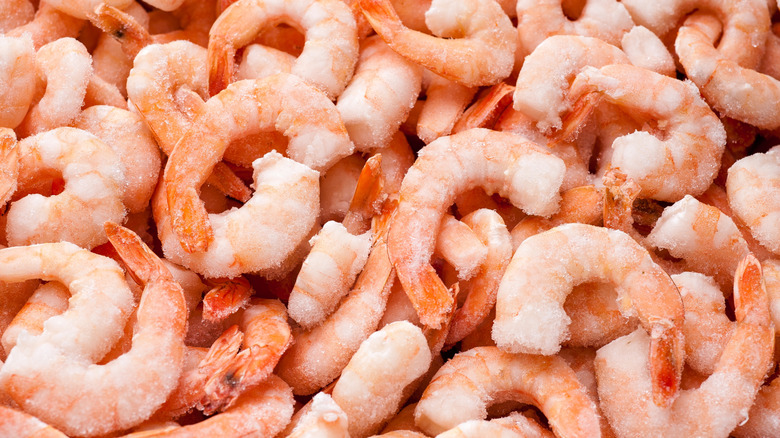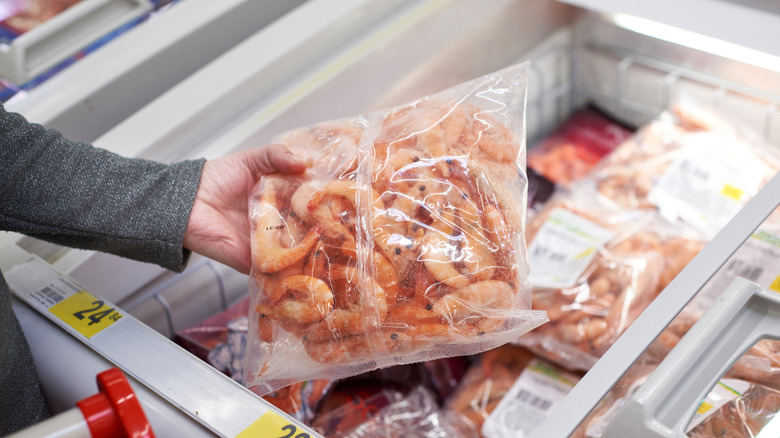
Taras Shparhala/Shutterstock
Shrimp are as easy to prepare as they are to eat, and do not require much cooking time. That's why it's a good idea to always keep a bag of shrimp in your freezer. Besides, most shrimp available in supermarkets or at fishmongers is frozen anyway, or pre-frozen and thawed at the very least — it's rare to find truly fresh shrimp unless you're near the sea. Once defrosted, the flavor and texture of shrimp can deteriorate within a day, which means you may not be getting the most out of your crustacean when buying a pre-frozen and thawed batch. So, why not just buy a bag of frozen shrimp and defrost as and when you need it yourself? The only catch here is that buying frozen shrimp can be a little confusing if you do not know what to look for.
Thankfully, there are tricks to frozen shrimp that will help you avoid ending up with a bad bag. First, always be on the lookout for freezer burn. If you notice that the shrimp inside are covered in crystals of ice, look discolored, have a milky hue, or seem withered, it has been exposed to freezer burn and is best left on the shelf.
Freezer burn is often the result of improper freezing practices or fluctuations in temperature that cause moisture loss. It could also be that the shrimp was refrozen after being defrosted once. Regardless, this isn't so much an issue about food safety as it is about quality. Freezer-burnt foods are safe to eat, but in the case of shrimp, the leathery texture, muted flavor, and visual discoloration may not be very desirable.
Other things to look out for while buying frozen shrimp

Sergeyryzhov/Getty Images
There are a few more helpful things to keep in mind while buying frozen shrimp. For starters, look for shrimp that have been frozen using the IQF (individually quick-frozen) method. These shrimp are frozen one at a time immediately after being caught, instead of being frozen into a large block. This helps preserve their freshness, which means they are able to withstand freezing better and are less susceptible to freezer burn.
Depending on the dish you're going for, you can choose between buying shrimp with the shells on or off. While shrimp with their shells on might be more flavorful, you will have to go through more prep to de-shell them and remove their veins. Once you've peeled them, don't throw away those shrimp shells: They make an excellent stock that can enhance your soups and stews. Be mindful of additives such as chemicals and salt. Many manufacturers add these to frozen shrimp to help with discoloration and defrosting. However, additives can have a negative impact on the taste of your shrimp, giving them a salty, metallic flavor.
Once you've identified the best bag of frozen shrimp and brought it home to cook in a few hours, let it defrost in the fridge. If, on the other hand, you want to cook immediately, submerge the bag of shrimp in a vessel of cold water for about 45 minutes, or remove the shrimp from the bag and thaw in cold water for 10 to 20 minutes. Although it's ideal to consume shrimp as soon as possible, you can store raw shrimp between three and 12 months in the freezer.



